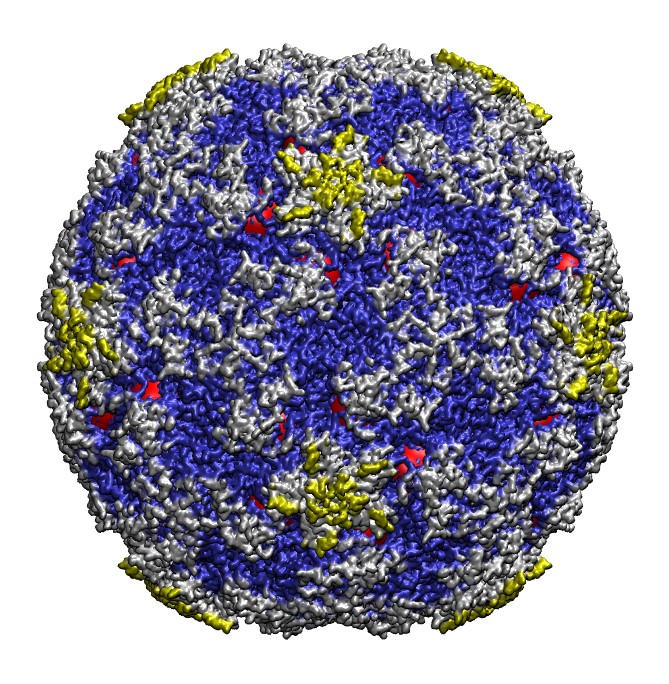
A new strategy to combat viruses

2018-05-03
A research team from Universidad Autónoma de Madrid (UAM) and the Severo Ochoa Centre for Molecular Biology (CBMSO) has discovered the physical basis as to why certain compounds inhibit the virus that causes the common cold. The study, which stands on the border between physics and biology, has been published in the journal Nanoscale.
Researchers from the Universidad Autónoma de Madrid (UAM) and the Severo Ochoa Centre for Molecular Biology (CBMSO) have shown that it is possible to design new antiviral drugs that increase mechanical stiffness when binding with the virus; a physical mechanism that has not yet been explored, until now, in the ongoing fight against viral illnesses.
The study, which borders physics and biology, was supervised by Mauricio G. Mateu, professor of Molecular Biology at UAM, and was published in the journal Nanoscale.
Mateu says: "We have shown that there is a connection between the mechanical stiffness of a virus, caused by molecules that are adjoined to it, and the inhibition of the virus’ infectivity.
As part of the study, Alejandro Valbuena used an atomic force microscope to quantify the effect that different organic compounds – which inhibit the infectivity of the virus – had on the mechanical stiffness of the common cold virus. He also looked at the different modifications in the structure of the virus (genetically introduced) that also inhibit the infection to various extents.
Valbuena, another researcher in molecular biology at UAM states: "The results showed that there is an excellent quantitative correlation between the increase in stiffness and the reduction in infectivity".
"The proposed model for explaining this relationship is that the increase in mechanical stiffness impairs the equilibrium dynamics of the virus, which is needed in order to interact with other molecules during the infection process and to release its genetic material into the host cell", the researcher says.
_____________________
Bibliography:
Valbuena, A., Rodríguez-Huete, A, Mateu, M.G. (2018). Mechanical stiffening of human rhinovirus by cavity-filling antiviral drugs. Nanoscale 10, 1440-1452.
Contact information:
Mauricio G. Mateu
Centro de Biologia Molecular "Severo Ochoa" y
Departamento de Biología Molecular
Universidad Autónoma de Madrid.
Tel: 34 91 1964575
Email: mgarcia@cbm.csic.es

